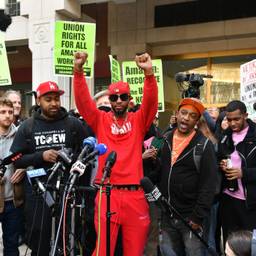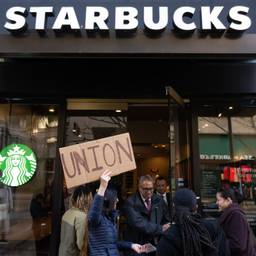Bird Union Workers Tell Audubon Union Busting Won't Fly
More than two years into the fight for a new contract, union members say the National Audubon Society appears to be punishing them by withholding better benefits.
Avalon Edwards and Thomas Birmingham
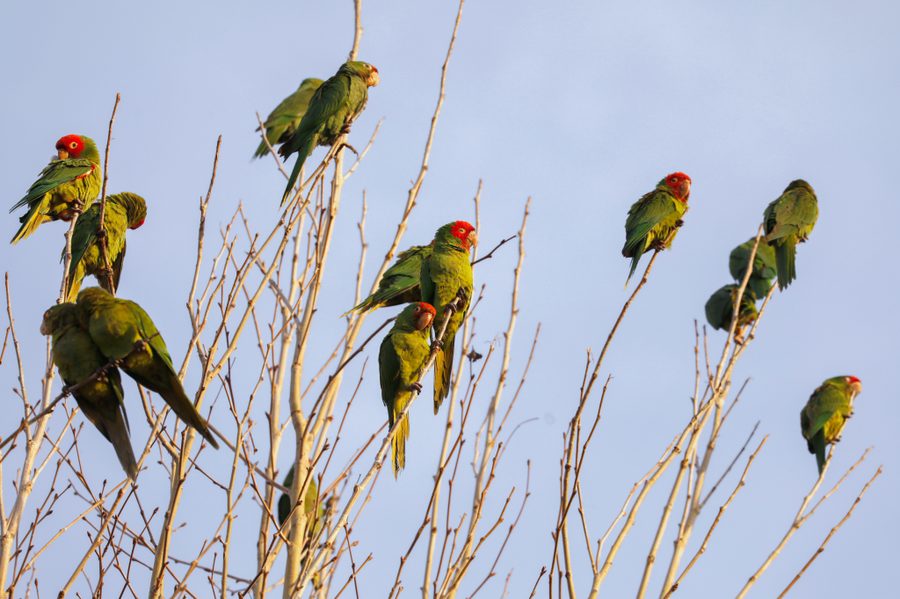
It had been just two weeks since Emily Lark gave birth to her second child. Her partner, Eva Lark, was already at the office, getting back into the groove of their grueling 70-hour work week as a public programs manager. In the middle of the day, while bouncing from one Zoom call to the next, Eva received a phone call from Emily. Something was off.
“I’m dizzy. I can’t catch my breath,” said Emily. At first, she had chalked it up to residual stress in the aftermath of an intense pregnancy. But the dizziness and shortness of breath wouldn’t go away, and when Emily called Eva, she was scared. “We need to go to the hospital now.”
At the hospital, Emily was promptly diagnosed with postpartum complications — preeclampsia, which, if untreated, can cause seizures, organ damage and high blood pressure. She was then admitted for an extended stay.
But Eva, an employee of the National Audubon Society for more than nine years, had already used up their allotted two weeks of paid parental leave. To look after Emily and their two young children, they were forced to use accrued vacation time.
“The stress on both of us was very severe,” said Lark. “[Audubon] even had the gall to say, ‘We’re so excited you’re expanding your family.’ I was like, ‘Don’t be excited. Give me equal benefits.’”
If Eva had been a non-union employee, however, they would have been on paid parental leave for another four weeks.
Eva’s crisis represents just one of many ongoing battles between the Audubon Society, an environmental nonprofit that pledges to “stand up” for birds, and the nonprofit’s roughly 250-person Bird Union, formerly known as Audubon For All. In March 2021, news broke about a union drive inside the organization — an effort that had been in the works for more than a year. In the roughly three years since, Audubon management has responded by refusing to voluntarily recognize the union, hiring union-busting consultants and granting unequal benefits between unionized and non-unionized staff.
On top of that, March 15 marked two years since Audubon and the Bird Union entered into contract negotiations — negotiations that, according to the union, management continues to stall with no end in sight.
In an email, Audubon’s chief people and culture officer, Maxine Griffin Somerville, emphasized that finalizing a contract is a “significant endeavor that takes time,” writing that “Audubon is 100% committed to working constructively with the union to achieve a collective bargaining agreement that supports staff and ensures Audubon can fulfill our important mission.”
While these tactics are run-of-the-mill for corporate entities fighting their unions, such as Starbucks or Amazon, they are much less commonly seen at environmental nonprofits like Audubon. What they’ve signaled to staff, however, is that management’s priorities go beyond merely protecting birds and extend to guarding Audubon’s bottom line.
Layoffs and workplace culture spark a successful union drive
Back in 2020, Audubon struck the match that would eventually ignite unionization efforts when they announced two rounds of layoffs, including one on April 22, Earth Day, a major fundraising and educational date for environmental groups.
“What those layoffs did is make employees realize there were no guarantees,” said Alisa Opar, features editor at Audubon Magazine who’s worked there for 15 years. “It didn’t matter if you’d been working for our organization for a year or 15 years. There were no protections. So those layoffs were galvanizing in terms of the formation of the union.”
A few months later, diversity and affinity groups at the organization surveyed 121 of their colleagues about Audubon’s workplace culture. The responses were damning. Only 28% of respondents felt their lived experiences at Audubon align with the nonprofit’s stated values, and 66% felt Audubon doesn’t create an environment where diverse staff can thrive. Politico reported significant internal issues at the organization in November 2020, including complaints from workers about the organization’s hostile and retaliatory environment for women and people of color.
In response, Audubon’s leadership, including then president David Yarnold, conducted an internal audit in early 2021 to investigate discrimination allegations, assess workplace culture and policies and identify areas of improvement. For assistance, management hired the firm Morgan Lewis, known for its “union avoidance” strategies and partnerships with infamous union-busting companies like Amazon.
The audit substantiated multiple claims from workers, including that “Audubon has a culture of retaliation, fear and antagonism toward women and people of color” and that “decision-making in the organization is handled by a tight-knit group of white males.”
A report summarizing the audit’s findings was released in April 2021, and that same month Audubon announced Yarnold’s departure from the organization, citing the need “to address many of the culture issues that have come to light.” Soon after, current president Elizabeth Gray was announced as Yarnold’s replacement.
Opar says the audit report, along with the layoffs, united employees. By the time Audubon changed leadership, most workers were signing union authorization cards.
“We were hopeful about the change in leadership, but it was still a very top-down organization,” says Opar.
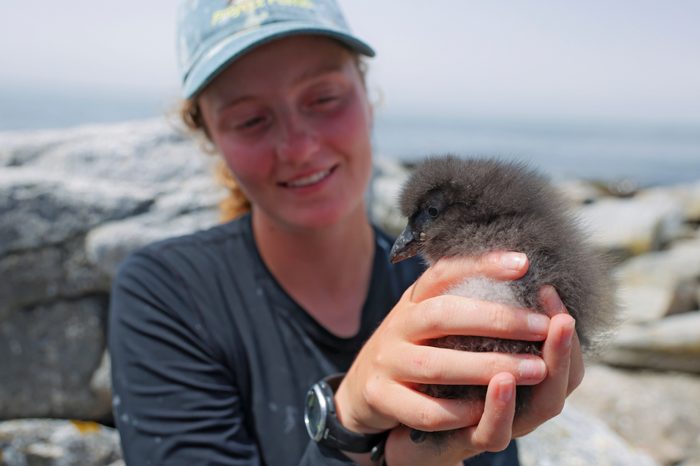
“We wanted to harness our collective power to try and improve conditions for the hundreds of employees who do the daily work of carrying out Audubon’s mission. And soon after Dr. Gray took over, union members went to her and asked for voluntary recognition.”
But in a glaring reminder of this top-down structure, Gray declined to voluntarily recognize the Bird Union.
Instead, management contracted another reportedly anti-union law firm, Littler Mendelson, to address union-related issues in the spring of 2021. When the workers announced their official unionization, they asserted how unusual these tactics are for organizations in the environmental non-profit space: “Audubon management refuses voluntary recognition and is an outlier in the environmental organization field in that regard, as organizations such as Sunrise Movement, Sierra Club, 350.org and Greenpeace have all voluntarily recognized their workers’ unions.”
Despite the organization’s response to union efforts, eligible Audubon workers voted 90-14 to join the Communications Workers of America (CWA) in September 2021.
Unequal benefits divide workers
In April 2023, as contract negotiations continued to stall, the Audubon executive team announced four additional weeks of parental leave for non-union employees (bringing the total to six), among other benefits changes. Some union members, like Eva Lark, believe Audubon is effectively punishing them by offering unequal benefits. This is really sinking in for employees planning to have families in the coming years.
Rodrick Leary, data scientist at Audubon and a member of the Bird Union bargaining team, worries that staying at Audubon might cost him and his future brood. He and his partner have started discussing whether to start a family. A key consideration has been that Audubon only offers union members two weeks of parental leave. “That’s not really a feasible amount of leave if we’re going to start a family while I’m working at Audubon,” says Leary.
Sarah Friedman, another Bird Union member, echoes Leary’s fears: “It feels like I have to choose between having a family and staying at this organization. And that is a lot of power to give your employer.”
“That should be something that me and my husband should choose to do when we want, on our own time, and not have to be taking into consideration what my employer values,” says Friedman.
Offering inequitable benefits between union and non-union employees is a tactic frequently used to divide and conquer workers attempting to organize. Amid mass union drives across the country in recent years, Starbucks has offered benefits like student loan repayment programs and savings account programs to workers who decide not to become union members. (In a written statement to In These Times, Starbucks spokesperson Kathleen Allen highlighted the company’s recently announced timeline to roll out equal benefits to all union employees by the end of June 2024.)
According to a 2022 National Labor Relations Board complaint, Amazon employed a similar strategy when managers illegally promised employees better pay and benefits if they voted against the Amazon Labor Union. (Amazon did not respond to multiple requests for comment.)
In using parental leave as a bargaining chip, union members say, Audubon has acted much like a for-profit company hoping to divide unionizing staff, even as its peers in the environmental justice realm, such as the Sierra Club and Greenpeace, boast better benefits such as 12 and 20 weeks of paid parental leave, respectively. Audubon’s employees, in the absence of federally mandated family leave, are left feeling the loss.
The improved benefits being withheld from union employees also include extended bereavement leave, meaning employees have two fewer days to grieve if they belong to the union.
At least one Audubon employee on the East Coast, Erin Williams, has suffered the fallout of this decision. On the condition of using a pseudonym for fear of retaliation, she recalled how she felt when she learned about the unequal benefits announced last year. “I went and sat at a table with colleagues, and some of us had some benefits and others had less benefits. It was just a horrible feeling, and so unfair and unjust. And, you know, made all the more painful, because leadership has said they want to be equitable and equity matters to them.”
Then a family member died suddenly.
The funeral was scheduled for the day after her three days of bereavement time had run out. Williams was forced to take vacation time to attend the service.
“I get a lot of joy and calmness from watching birds,” she says while gazing out at sparrows. “That’s probably why I’m as disheartened and sad as I am,” Williams adds. “Because I care so deeply about the mission.”
Responding to these concerns, Audubon wrote, “We want to provide these improvements to all staff, which is why we have proposed these same exact benefits to the union in collective bargaining.”

Angered by the unequal benefits between union and non-union employees, Bird Union staff in Audubon’s D.C. office taped a letter to Gray’s office desk in July 2023. It was signed by more than 150 union members and demanded the equitable extension of benefits to all employees.
“The union has repeatedly made clear at the bargaining table and in writing that we do not object to you rolling out this set of benefits to all employees,” read the letter. “We reserve our legal right to bargain — and improve — those benefits in our contract. You have created an inequitable situation across the organization, and we’re already seeing impacts on our coworkers.”
Friedman says she and her fellow union members physically delivered the letter to Gray because they had been bargaining for more than a year, and Gray has failed to show up to a single bargaining session. “We just don’t hear from her,” says Friedman.
Around the same time Audubon announced the rollout of the new benefits, multiple local Audubon chapters and the Bird Union changed their names to take an anti-racist stance against associating with John James Audubon, a white supremacist, enslaver and prolific bird illustrator during the 19th century. But the Audubon board decided in March 2023 to keep the larger organization’s name. According to the New York Times, an internal survey of employees, members, donors and volunteers revealed that Audubon may have been trying to avoid alienating “older, conservative individuals” who provide the organization with “generous funding, time and support” through dues and donations.
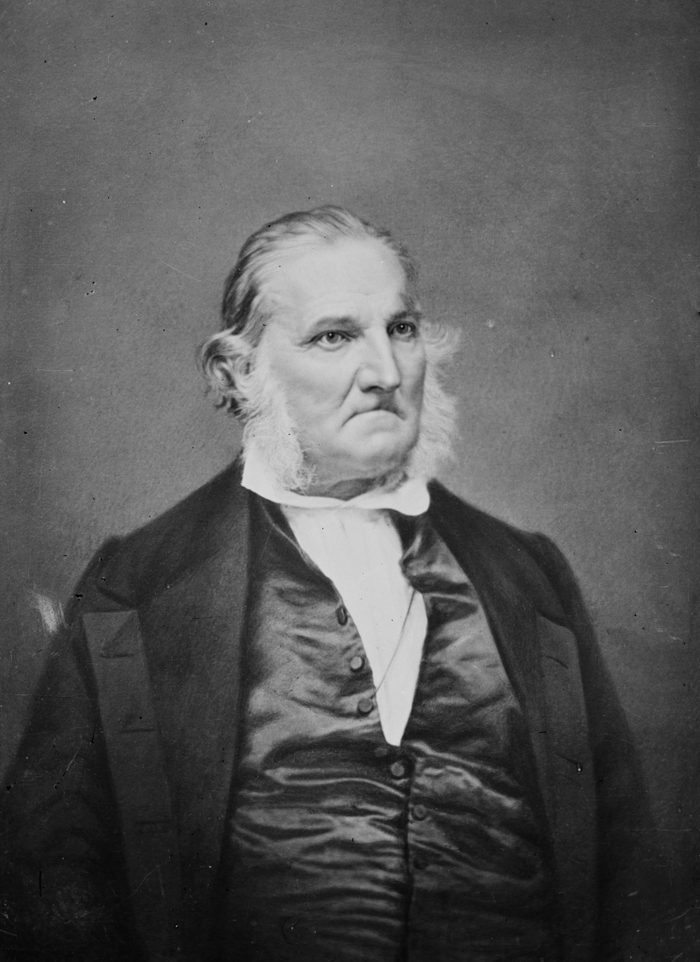
Hoping to soften the blow, the board paired this controversial announcement with a pledge of $25 million to support workplace culture improvements. But those funds have remained largely unused after the former interim equity, diversity and belonging (EDIB) director resigned in December 2022.
In a statement to In These Times, Somerville, on Audubon’s behalf, disputed that EDIB work was stalled, writing, “After the departure of our chief EDIB officer, we had an acting head of the EDIB team, and then I served in that role on an interim basis while we conducted an extensive national search and hired a new chief EDIB officer in September. The EDIB team carried out several major projects in that time.”
Still, many union members feel not enough has been done to address racial and gender equity issues, including unequal benefits, which employees say disproportionately harms workers of color and women in the union.
“There’s a culture that I’ve sort of run into like, ‘This is the way we’ve sort of always done things, so let’s keep doing it that way,’” Leary says. “We can’t continue to say this is the way we’ve always done things and expect to become a more welcoming place to BIPOC audiences.”
No signs of a deal in sight
Since the union effort began in 2021, represented and non-represented staff have received the same end-of-year salary increases. But last winter, says the union, end-of-year raises were used as leverage in the contract negotiation process. In an email from management obtained by In These Times, Audubon makes clear that merit-based end-of-year raises are reserved for non-union employees while contract negotiations hang in the balance.
“*If* you plan to donate to @audobonsociety, know that management is giving annual raises this year to everyone EXCEPT Bird Union workers,” the union posted on X (formerly Twitter) in December 2023.
In essence, represented staff would be eligible for these increases as soon as a contract is ratified. But with negotiations over such a contract stalled for more than two years and no signs of a deal in sight, Audubon has found a way to effectively strip Bird Union members of these expected raises.
“I mean, we’re talking anywhere from 3% to 6% increases,” Leary said. “We’re into the beginning of March, and unionized staff still have not received our merit increases.”
Of the 41 proposals made so far in the bargaining process, the parties have reached only 22 tentative agreements, with another 19 awaiting resolution as of late-April. One potential driver of the stall, according to Luis Benítez-Burgos, a staff representative with the CWA, has been that bargaining with Audubon “is problematic because nobody [on Audubon’s executive team] knows anything about labor law.”
This has resulted in the executive team leaning entirely on legal counsel to conduct bargaining without showing up to the table themselves. Benítez-Burgos, who has been a union representative for nearly 15 years, said this approach is highly unusual.
“There is no one from the executive team [at bargaining meetings], which is extremely rare to see in a nonprofit,” Benítez-Burgos said. “You usually have a lot of people that can give you at the table quick responses. … We went to have a meeting in person at the Audubon offices in March [2023]. Dr. Gray was in the building, and she refused to meet with the bargaining team, not even to say hi, not even to welcome — she has avoided, at all costs, to deal with the union.”
In Audubon’s statement, Somerville did not directly respond to these allegations, instead writing only that “Audubon has a capable bargaining team at the table that works closely with our CEO. She is aware of important aspects of the bargaining process and is part of decisions that the bargaining team brings to the table.”
Now, as the two-year bargaining anniversary has come and gone, Bird Union members are losing patience, and confidence, in the process.
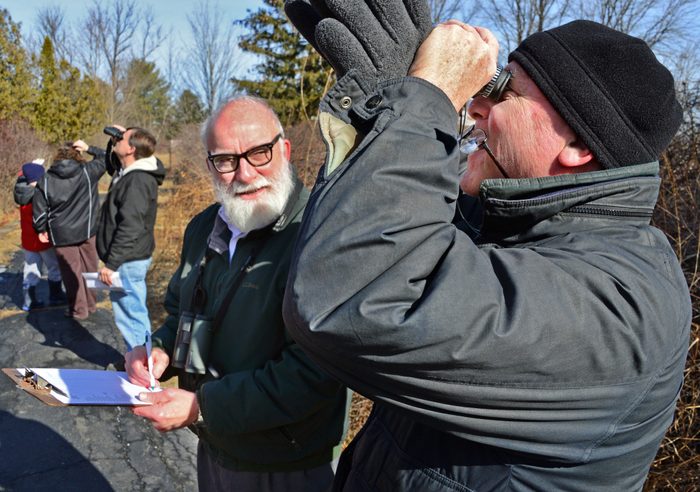
To Leary, stalled-out negotiations mean Audubon isn’t working toward solutions to the issues workers have identified over the last several years: “Elizabeth Gray is talking about how she does not want to repeat the mistakes of David Yarnold, and then we come to the bargaining table, and what they are pushing forward is a continuation of Yarnold policies.”
Leary expressed further frustration on a phone call in March, saying, “We still don’t feel like we’re making enough progress in terms of the financials of the contract. We feel like management is kicking the can again. We feel like they are not showing the desire to get this contract done.”
And in the absence of a contract, some long-term Audubon employees say they may leave the organization they once considered home.
“I saw myself as working for Audubon for decades to come, but this has really made me reconsider. … I think, because I do give 110% of my work at the negative consequence of my own family, I have to reassess,” Lark told In These Times in August 2023. “If our organization doesn’t care about their employees, how can we accomplish our mission?”
Just a few months later, the price of staying at Audubon became too high for Lark. They handed in their resignation in October and now work for Boulder County Parks and Open Space in Colorado. Earlier this month, they say, they hired a fellow former Audubon employee to come join them.
And if they decide to have another child, this time they’ll get 12 weeks. “It’s still very difficult for me to reconcile that I don’t work for that organization anymore,” Lark said. “It’s painful. But what I said to Elizabeth Gray was, ‘It’s too late for me. Don’t let it be too late for others. Because this is gonna keep happening. You’re going to lose amazing staff.’”
Avalon Edwards is an abolitionist policy advocate and an editorial intern at In These Times. They are currently based in San Francisco.
Thomas Birmingham is the Research Fellow at In These Times and an investigative reporter in New Haven, Connecticut. He has previously covered housing, tenant movements, and criminal justice for The Nation, The Appeal and the Louisville Courier-Journal.
